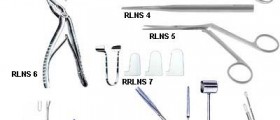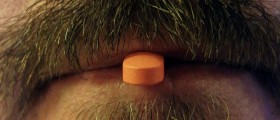Introduction to Sinus Pain Without Congestion
When a person complains of the chronic pain of the sinuses it is usually caused by some type of congestion. That person usually has mucus running through the entire sinus area, which is not only clogging the nose, but also the ears. This leads to a lot of pressure building up in this area, which of course causes pain in the sinuses.
This type of pain is usually caused by congestion that results from cold symptoms, or from allergies that are related to foods, pollens, fungus, or other things.

However, there are people who suffer from sinus pain but do not experience any congestion.
Some patients have sinus pain without the common nasal symptoms, and they might have been treated many times by doctors for sinus infections, allergies and many other things with little success.
Causes of Sinus Pain
There are several reasons for this phenomenon.
Sometimes, the pain can be caused by a headache that is just focusing itself on this area.
If all sinus treatments have failed, it is best to try to treat the problem as if it is a headache. Migraine headache medications might be the best solution in such a case. However, it is best to get checked out by a doctor and to have a CT scan of the area done to see if there are any visible problems.
- Studies of patients who have self-diagnosed or been diagnosed with sinus headaches were found to have migraines or tension headaches in more than 80 percent of cases; only three to five percent of these patients had sinusitis.
- Sinus headaches are most likely due to migraines or tension headaches. Migraines are diagnosed by symptoms, including the frequency and severity of symptoms, family history, and by physical exam. Migraines can also include nausea and vomiting.
- These episodes may be triggered by hormonal changes, lack of sleep, certain foods or alcohol or caffeine, stress, or environmental changes like weather, altitude changes, or allergens. Many patients with migraines have family members who also experience migraine headaches.
- If you have unusual or severe symptoms, additional tests such as an MRI of the brain may be ordered to rule out more serious conditions that can cause headache pain, such as tumors or bleeding around the brain. If you have repeated episodes of sinus pain and pressure, a nasal endoscopy (a pencil-sized scope used to see inside the nose and sinuses) or imaging such as an MRI or CT scan can determine if sinus pain or pressure is due to a sinus infection or other sinus pathology.
- Other causes of facial pain and pressure can include temporomandibular joint (TMJ) syndrome, clenching or grinding your teeth, trigeminal nerve pain, temporal arteritis (associated with scalp pain, pain in the temple, jaw pain, and vision changes on one side), dental infection, or other neurologic causes of facial pain.
Even if there is no anatomic or structural explanation for the pain, the sinuses can hurt because the nerves that supply them can become irritated in some way.
Another probably cause is a deviation in the nasal septum. This structure is almost never completely straight and when it is really crooked, there can be sharp spurs that make nasal congestion much worse.
Nasal septal deviations essentially cause airway obstruction, which could be the cause of the pain.
However, if sharp bone spurs have resulted, this could cause pain as well.
Sinusitis as a Cause of Sinus Pain
This type of sinus pain can vary in severity as well. When chronic pain results from this kind of deformity, it is usually best to repair the deviations surgically in order to restore the airways to their usual shape.
The root of the pain could also be sinusitis. There are several clues that will show if the sinuses are blocked or infected, and what is causing the pain if there is no congestion involved or any other symptoms for that matter.
When this is the problem, a person will usually experience one-sided pain, pain that is worse when the person leans their head down, pain that begins after a cold even though there are no more remaining symptoms, or pain that has a clear response to the use of antibiotics.
All these things will point to the fact that the problem could be sinusitis.

















Your thoughts on this
Loading...